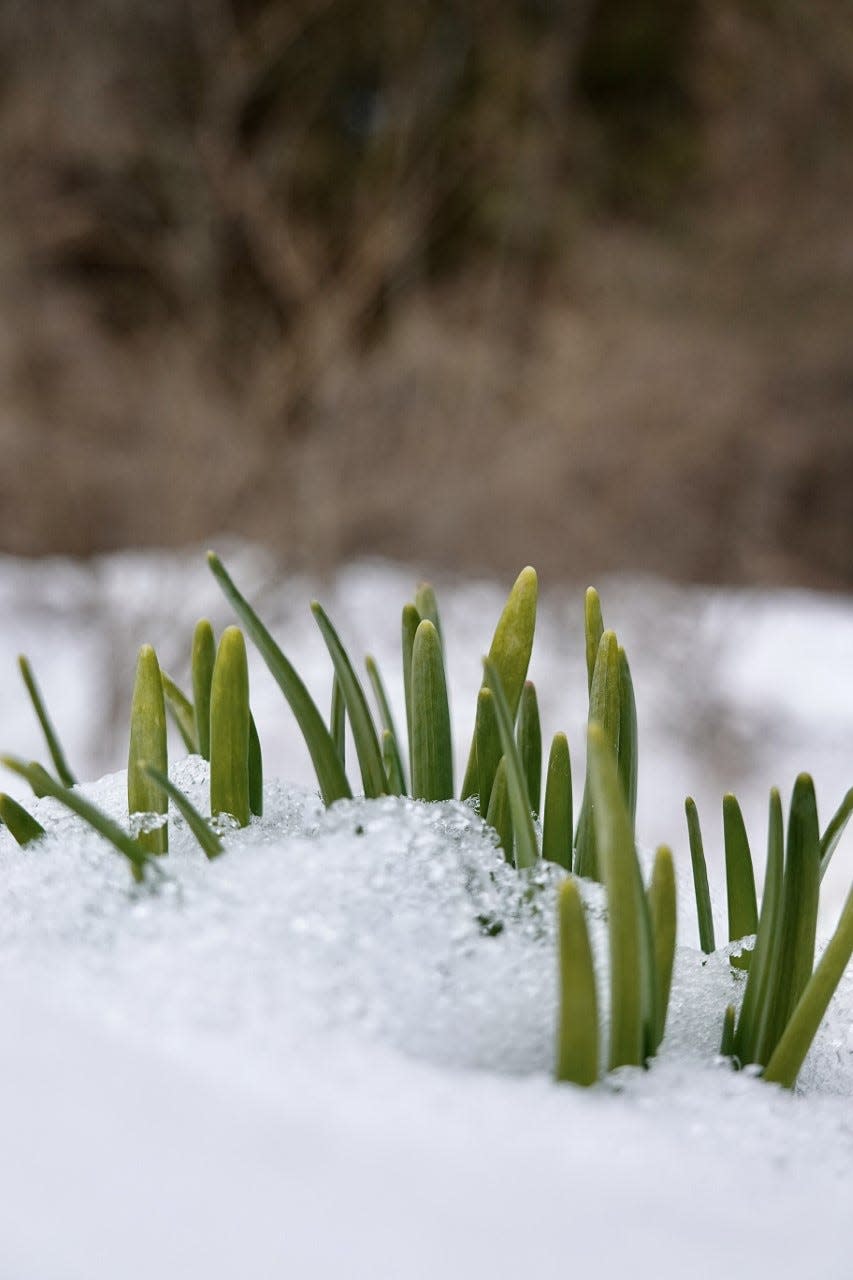Is winter weather over yet? Here's your spring weather forecast, according to NOAA
March is always a confused month, weatherwise, and this year has been no exception. As the Earth's atmosphere lurches from winter to spring, wild swings of weather are typical across the country.
And for folks who live in the eastern half of the U.S., the recent chill (and snow for the Northeast) has been a bit of a shock; the three "winter" months from December to February were unusually mild and mostly snow-free, overall. In fact, it was among the top two warmest winters on record in eight states from Massachusetts to Kentucky, the National Oceanic and Atmospheric Administration (NOAA) reported last week.
Meanwhile, Californians are wondering if a months-long siege of rain and snow will ever end.
In the short term, for at least the next week or so, chilly weather is likely across most of the country. And in waterlogged California, yet another atmospheric river storm is forecast for next week.
A weird winter winds down: New data details record warmth, strange snow patterns
What's the spring temperature forecast?
But what will the next three months bring? On Thursday, federal scientists released their national weather forecast for the spring months of April, May and June. Here's what they expect:
Much of the southern and eastern U.S.: A warmer-than-average spring, according to the experts at NOAA. The greatest chance for above-average temperatures is from the southern High Plains east to Florida and north along the East Coast.
Southern tier of the nation: Along withwarmth will come the risk of wildfires this spring, said Jon Gottschalck, a forecaster at NOAA’s Climate Prediction Center. "The highest concern now is the Florida peninsula," he said, adding that throughout the spring, the potential for fire weather remains high in the south-central High Plains.
Northern Plains and portions of the Far West: Winter's chill is expected to hang on a while longer, NOAA said. The regions should see cooler-than-average temperatures from April through June.

What about rain and snow?
NOAA forecasters predict "above-average precipitation this spring across the Great Lakes, Ohio Valley, and into parts of the mid-Atlantic and Northeast."
Below-average precipitation is most likely for the Southwest and parts of the Pacific Northwest, NOAA said.
The rest of the nation, including most of waterlogged California, has what NOAA calls "equal chances" of above- and below-normal amounts of precipitation.
(NOAA's climate forecasts for precipitation don't specify whether it will fall as rain or snow.)
More: La Nina, which worsens hurricanes and drought, is gone after 3 years
Spring flood and drought forecast
There is a risk for floods in most of the eastern half of the nation, including much of the Mississippi River Basin, NOAA said. Specifically, forecasters predict "moderate to major flooding" along the Mississippi River from Minneapolis to St. Louis.
An above-normal to record snowpack in the Sierra Nevada, combined with elevated soil moisture, increases the threat of spring flooding from snowmelt, especially at high elevations.
.@NOAA #SpringOutlook 2023: More than 44% of the continental U.S. is at risk for flooding this spring. For the first time since 2017, portions of CA may expect minor flooding. https://t.co/Po8UZrZmCA @nwscpc pic.twitter.com/x4ikITtODX
— NOAA Communications (@NOAAComms) March 16, 2023
“Approximately 44% of the U.S. is at risk for flooding this spring,” said Ed Clark, director of NOAA’s National Water Center. “California’s historic snowpack, coupled with spring rain, is heightening the potential for spring floods.”
However, spring snowmelt will bring welcome water supply benefits to much of California and the Great Basin, NOAA said. Reservoirs in the Colorado River Basin, such as Lake Powell and Lake Mead, are at record low water levels after years of drought.
Finally, as for drought, the colossal amounts of winter rain and snow in the West, especially California, put a serious dent in the nation's drought. "Moderate to exceptional drought coverage across the U.S. is at its lowest since August 2020 and is likely to continue improving, or end entirely, across much of California and the Great Basin," NOAA reported.
In addition, the spring wet season should ease the drought in the northern and central Plains.
But drought is forecast to persist or possibly worsen in the southern High Plains, Northwest and northern Rockies, according to NOAA.
Just in: @NOAA #SpringOutlook 2023 -- Forecasters say extreme to exceptional #drought likely to persist and expand in the southern High Plains. https://t.co/Po8UZrZmCA @nwscpc @nwsnwc pic.twitter.com/c8LHusRvFZ
— NOAA Communications (@NOAAComms) March 16, 2023
This article originally appeared on USA TODAY: NOAA spring forecast: Floods possible in eastern U.S.; drought wanes in West

